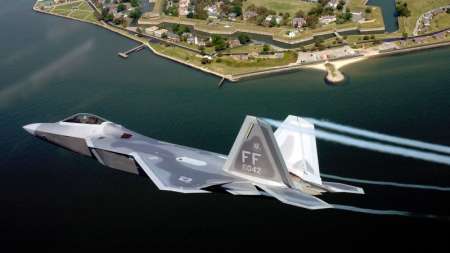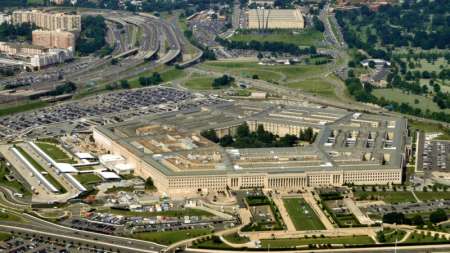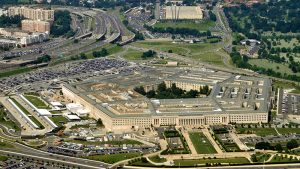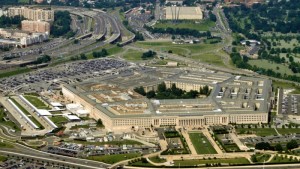The Intelligence Community wants to develop a kind of universal translator that will search documents across a full range of media and make sense of them for English-speaking analysts. […]
The White House wants to clear the way for Federal agencies to adopt commercial cloud computing, even if that means tweaking acquisition rules to help them get there. […]
Since 2001, the Department of Veterans Affairs (VA) has tried three different modernization programs for its healthcare system. So when the department announced another plan to modernize by adopting the same system as the Department of Defense (DoD), the Subcommittee on Information Technology was skeptical and interrogated them in a Dec.7 hearing. […]
Since blockchain first appeared in 2009 as the digital ledger for Bitcoin cryptocurrency transactions, it has steadily taken the online world by storm, in the process practically becoming a synonym for security. Even if a lot of people still don’t know what it is, they’re beginning to hear it more and more. IBM, for instance, has taken to mentioning “blockchain for security” in its TV ads. And in a sure sign of pending mainstream acceptance, a “Blockchain for Dummies” book is now available. […]
Department of Defense (DoD) officials have been framing Artificial Intelligence (AI) as the center of a “new space race,” citing its growing importance in military and geopolitical operations, the investments other countries such as China have been making in AI, and Russian President Vladimir Putin’s assertion that whoever takes the lead in this field will be “ruler of the world.” […]
The Defense Department (DoD) is leading the brain-computer interface charge within government, recently investing $65 million across six projects. Each of these projects will work to develop high-resolution neural interfaces and working systems that could help in sensory restoration, specifically in these projects with regard to sight and speech. The contractors–five research organizations and one private company–will work under the Defense Advanced Research Project Agency’s (DARPA) Neural Engineering System Design (NESD) program, which was launched in 2016 with the goal of developing an implantable neural interface able to deliver high-bandwidth data transfers between the brain and electronics systems. […]
The Army is forging ahead with deployment of its Big Data Platform (BDP), a move that underscores the Department of Defense’s (DoD) plans for using open-source software, commercial technologies, and cloud services to get a grip on the data it collects from a wide range of sources. […]
Artificial intelligence (AI) systems are getting awfully good at the Who, What, When, Where and even How for a variety of jobs, from military operations to financial transactions to medical diagnosis and treatment. But the Why is another story. […]
Pandemic threats such as Ebola, Zika, and avian flu are not only a danger to public health, but are also viewed as potential national security threats, as the National Intelligence Council, an arm of the Director of National Intelligence, points out in its 2017 report, Global Trends: Paradox of Progress. […]
For military analysts struggling to make proper use of millions of hours of full-motion video from drones, the cavalry will begin arriving this month, in the form of computer vision algorithms developed under the Department of Defense’s (DoD) Project Maven. […]
The Army and Navy recently announced that their Cyber Mission Teams were fully operational, and the U.S. Cyber Command now has all of their planned complement of 133 teams in business. With its people (totaling more than 6,000 service members and civilians) in place, U.S. cyber forces can now look to machines to help carry out effective operations in the cyber domain. […]
The Department of Defense (DoD) is cooking up big plans for blockchain technology, the digital ledger best known for its support of cryptocurrencies such as Bitcoin and Ethereum. The technology’s decentralized, encrypted approach holds promise for a variety of secure functions in addition to financial transactions, from cyber defense and distributed communications to protecting the digital supply chains used by deployed forces for 3D printing. A Navy officer on the Naval Innovation Advisory Council has written that blockchain could “revolutionize” the way military operations over the next decade. […]
DOD’s Defense Innovation Unit Experimental (DIUx) recently awarded C3 IoT a multiyear contract to develop an AI-based data management platform for predictive maintenance on aircraft systems and components, beginning with the Air Force’s E-3 Sentry (AWACS) plane and the F-16 fighter. […]
Congress wants the Defense Department (DoD) to elaborate on its growing interest is blockchain technology, the secure digital ledger system that can be applied not only to protect financial transactions, but also many other operations such as defending against cyberattacks, protecting logistics supply chains, and securing communications with aircraft and satellites. […]
President Donald Trump nominated Michael Griffin to be principal deputy under secretary of defense for Acquisition, Technology, and Logistics on Oct. 27. […]
The White House announced that John Zangardi will serve as the new chief information officer for the Department of Homeland Security. Zangardi is currently serving as the acting CIO at the Department of Defense. He is leaving the DoD to replace Richard Staropoli, who unexpectedly resigned as DHS CIO in August. […]
Federal IT leaders are shifting focus from trying to secure every system to prioritizing the systems that need the most security controls. “We realized that no matter how much we protected our systems, something could happen,” said Thresa Lang, deputy director of the Navy Cybersecurity Division, at CISQ’s Cyber Resilience Summit on Oct. 19. […]
The Department of Defense is recognizing National Cybersecurity Month by expanding cybersecurity education to families of service members. “This is not just an IT issue,” said Essye Miller, deputy CIO for cybersecurity and chief information security officer for DoD. “Everyone that’s operating on the network has a responsibility.” […]
The Department of Defense is following the Federal push to move toward an enterprise structure by using Defense Enterprise Office Solution (DEOS), an effort by the Defense Information Systems Agency to acquire Software-as-a-Service at a DoD enterprise scale. DoD plans to move 4.5 million users to the cloud, using this approach. […]
John Zangardi, acting chief information officer of the Department of Defense, announced that his team has been working on a pilot for the Defense Travel System in order to modernize and make it more user-centric to serve DoD civilians and the armed forces. […]
The IT professionals at the Department of Defense are learning to speak the language of the warfighter. […]
No one knows for sure what the final draft of President Donald Trump’s executive order on cybersecurity will contain, but a Department of Homeland Security IT leader said she is just relieved that there is a focus on cybersecurity at all. […]
The Defense Department is likely within 18 months of introducing autonomous cybersecurity tools that will be capable of augmenting human analysts by predicting threats and dynamically isolating parts of the network that may come under attack, outgoing CIO Terry Halvorsen said. […]
A draft cybersecurity executive order would mandate a review of the most critical U.S. cyber vulnerabilities, the principal cyber adversaries of the U.S., ways to incentivize cybersecurity measures in the private sector, and the capabilities of the DoD, DHS, and the NSA. […]
Through a new open data project, the Department of Defense will make information on the Korean War publicly available for the first time on Dec. 19, and the Air Force major who helped design the portal said he looks forward to what civilians will do with this data. […]
The Department of Defense has nominated Essye Miller as its new chief information security officer, filling a position that was vacated late last month. […]
A majority of the 24 major agencies defined under the CFO Act are expected to meet the deadline to begin reporting their spending information. […]
The Department of Defense announced two initiatives based on the past success of Hack the Pentagon and aimed at increasing vulnerability reporting opportunities: a Vulnerability Disclosure Policy and Hack the Army. […]
In the wake of recent Dyn attacks that temporarily shut down major websites such as Twitter, Amazon, and PayPal, Sens. Angus King, I-Maine, and Martin Heinrich, D-N.M., sent a letter to President Obama this week to request a strengthening of the U.S. ability to detect and respond to major vulnerabilities. […]
Rep. Gerry Connolly, D-Va., called on the Department of Defense to stop being a “rogue elephant” when it comes to cloud authorization and the FedRAMP process. […]






























